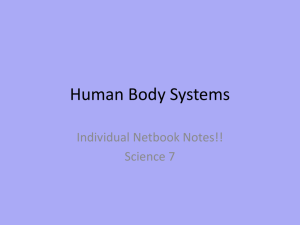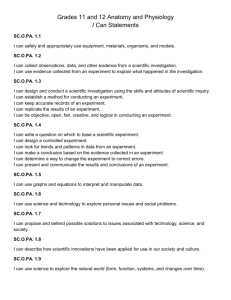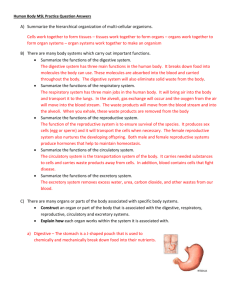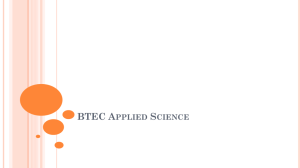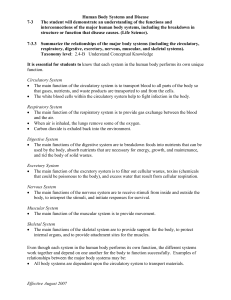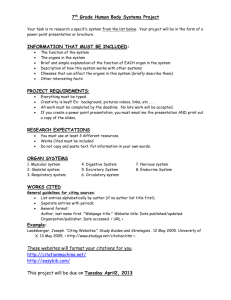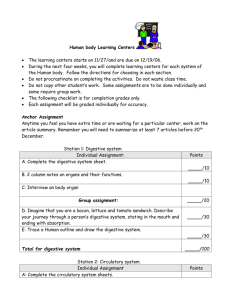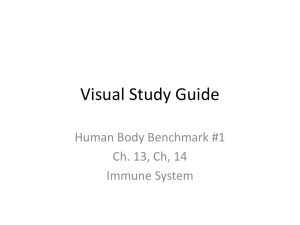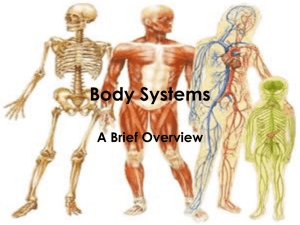Human Body Systems
advertisement
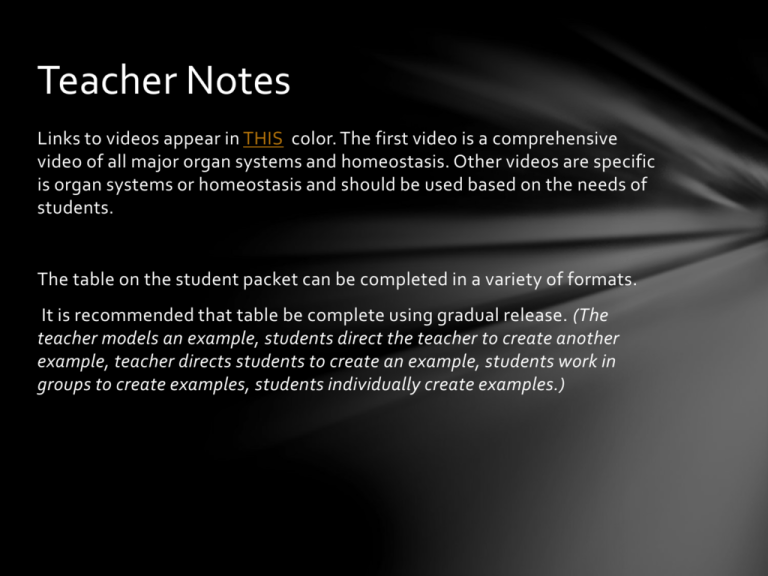
Teacher Notes Links to videos appear in THIS color. The first video is a comprehensive video of all major organ systems and homeostasis. Other videos are specific is organ systems or homeostasis and should be used based on the needs of students. The table on the student packet can be completed in a variety of formats. It is recommended that table be complete using gradual release. (The teacher models an example, students direct the teacher to create another example, teacher directs students to create an example, students work in groups to create examples, students individually create examples.) Human Body Systems SC.6.L.14.5 (Human Body Systems) BrainPOP Video – Body Systems http://www.brainpop.com/science/diversityoflife/humanbody/ Human Body Systems Cells Tissue Organ Organ System Organism There are eight (8) major human body systems. (Dr.’s R Nice) D - Digestive System R - Respiratory System S - MusculoSkeletal System R - Reproductive System N - Nervous System I – Immune System C - Circulatory System E - Excretory System Musculoskeletal (Muscular/Skeletal) System BrainPop Video! There are three types of muscles: Skeletal (Voluntary), Smooth (Involuntary), Cardiac (Involuntary). Functions: Control movement. Skeletal System BrainPop Video! Structures: Composed of : 1. bones, 2. cartilage, 3. ligaments, and 4. tendons. Functions: 1. provides movement, 2. protection, 3. shape, 4. support 5. produces red blood cells. How do the muscular and skeletal systems work together? Digestive System BrainPop Video! Structures: Mouth, pharynx, esophagus, stomach, smallintestines, large- intestines, rectum, anus, liver, pancreas, gall bladder, appendix. Functions: To digest food provide nutrition to the body remove the waste from the body. Excretory System Includes many systems such as digestive, respiratory, skin and urinary system. Urinary system is considered the Excretory system. Structures: Kidenys, ureters, urinarybladder, urethra. Functions: Removes waste in the form of urine which consists of urea, water and other salts. How do the digestive and execratory systems work together? Respiratory System Functions: Breathing brings oxygen into the lungs Removes carbon- dioxide Provides oxygen to red blood cells Cellular respiration: converts oxygen and glucose into carbon dioxide, water and energy Is the reverse process of photosynthesis (plants) Respiration: C6H12O6 + 6 O2 6 CO2 + 6 H2O + ENERGY Photosynthesis: 6 CO2 + 6 H2O + ENERGY C6H12O6 + 6 O2 Circulatory System Function Heart: Red blood cells: • provides oxygen & nutrients to body cells: fights diseases (Immune System) How do the respiratory and circulatory systems work together? Nervous System: Structures: Central Nervous System (CNS): Brain + Spinal cord Peripheral Nervous System (PNS): Nerves Functions: Responds to stimuli to maintain Homeostasis. Immune System Structures - Body has 3 lines of defense: skin, breathing passages, mouth and stomach. Functions: It is a defense mechanism of the body. It fights diseases. Bacteria, viruses and fungal infections Reproductive System Structures: Glands, and hormones. Functions: Endocrine system produces chemicals that control many of the body’s daily activities as well as long term changes such as growth and development. Reproductive System Structures: Ovaries, testes, eggs, sperms. Functions: Sexual reproduction involves the production of eggs by the female and sperm by the male, which join together during fertilization.

